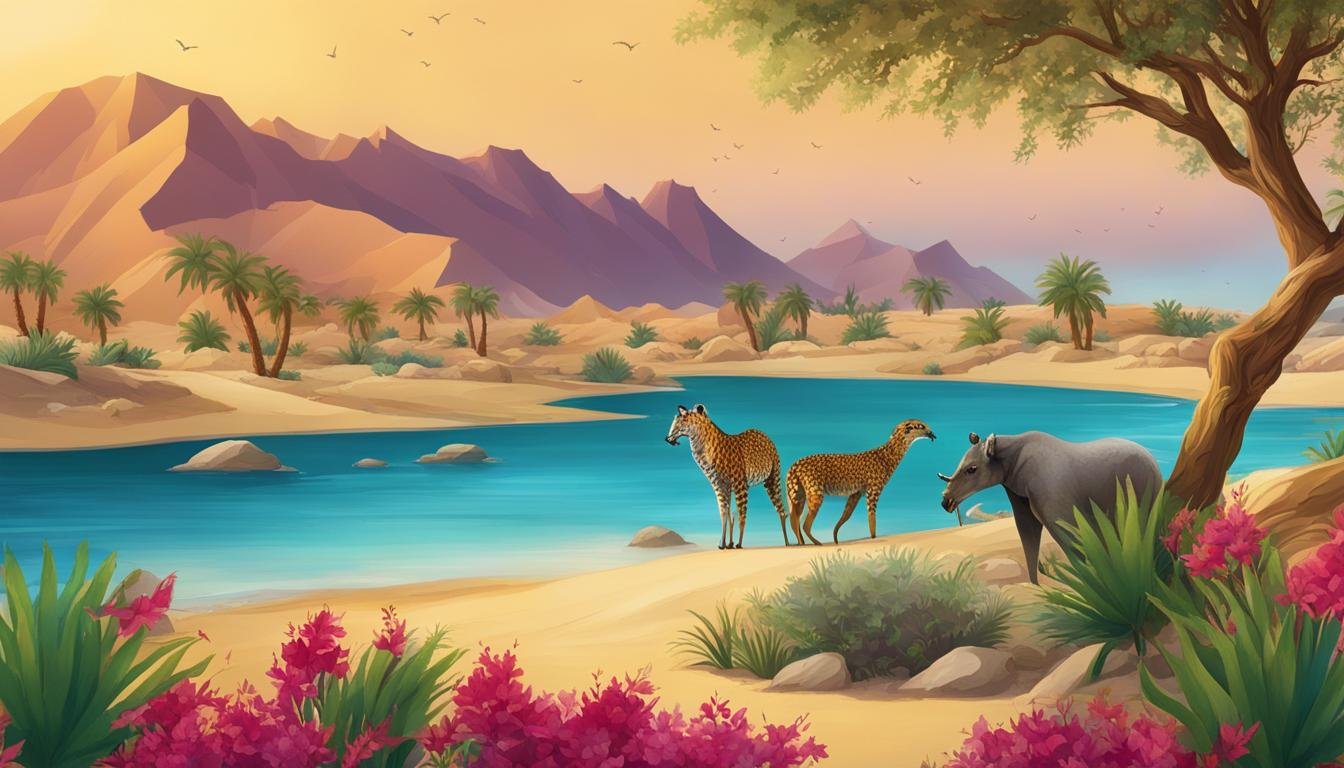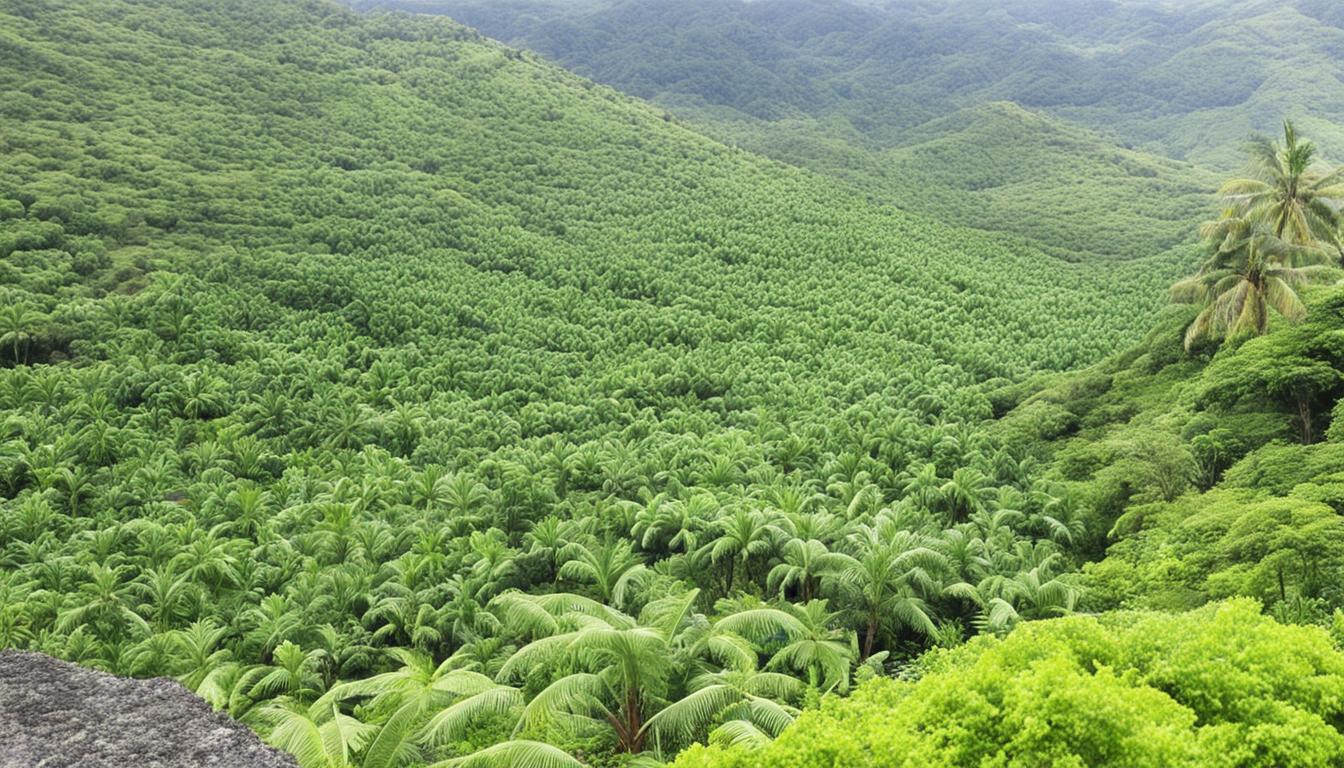Romania Biodiversity: Animal and Plant Species and What is Under Threat
Romania is a country renowned for its spectacular biodiversity, with a rich variety of animal and plant species found within its borders. From the towering Carpathian Mountains to the expansive plains and meadows, Romania’s diverse landscape provides a home to a multitude of unique plants and animals. However, this precious biodiversity is under threat from various factors, including habitat loss, climate change, and pollution. In this article, we will explore the incredible species diversity of Romania, the importance of maintaining ecosystem health, the threats facing its biodiversity, and the conservation efforts being made to protect endangered species and preserve wildlife.
Key Takeaways
- Romania is home to over 3,700 identified plant species and 33,792 identified animal species, showcasing its remarkable biodiversity.
- Pressing threats to Romania’s biodiversity include climate change, habitat loss, and pollution, which put the delicate ecosystem at risk.
- Conserving Romania’s flora and fauna is crucial for maintaining the ecological balance and promoting sustainable development.
- The Danube Delta, covering 580,000 hectares, is a haven for biodiversity in Romania, supporting a wide range of plant and animal species.
- Climate change poses significant challenges to Romania’s biodiversity, impacting species’ behavior, distribution, and habitat health.
Romania’s Ecological Balance: The Importance of Biodiversity
The ecological balance in Romania is intricately linked to the diverse range of plant and animal species found within its borders. The country’s varied ecosystems, including forests, grasslands, wetlands, and aquatic habitats, contribute to the overall stability and health of the environment. Biodiversity, with its abundant flora and fauna, plays a critical role in maintaining essential ecosystem functions.
One of the key functions performed by biodiversity is nutrient cycling, wherein plants, animals, and microorganisms work together to recycle and distribute essential nutrients throughout the ecosystem. This process ensures the availability of nutrients for all living organisms and helps maintain the health of the ecosystem as a whole.
Another crucial function of biodiversity is pollination, which is primarily carried out by insects, birds, and bats. These pollinators transfer pollen from one flower to another, enabling the reproduction of plants. This process is vital for the production of fruits, seeds, and other plant materials, providing sustenance for both wildlife and humans.
Pest control is yet another valuable service provided by biodiversity. Natural predators, such as birds, bats, and beneficial insects, help regulate populations of pests that can harm crops or spread diseases. This natural control mechanism reduces the need for chemical pesticides, promoting a more sustainable and environmentally-friendly approach to agriculture.
Conserving the flora and fauna of Romania is crucial for promoting sustainable development and ensuring the long-term well-being of both wildlife and human populations. By protecting and preserving the biodiversity of the country, Romania can safeguard its essential ecosystem functions, maintain a healthy and balanced environment, and promote a harmonious coexistence between nature and society.
The Role of Wildlife Conservation
Wildlife conservation efforts play a significant role in maintaining Romania’s ecological balance. By protecting and preserving endangered species and their habitats, conservation initiatives contribute to the overall health and stability of the ecosystem. Moreover, these efforts help prevent the loss of unique and valuable genetic resources that can have far-reaching consequences for future generations.
The Importance of Sustainable Development
Sustainable development is an essential component of maintaining Romania’s ecological balance. By ensuring that economic growth is achieved while considering the long-term impact on the environment and natural resources, sustainable development aims to strike a balance between human needs and the preservation of ecosystems. This approach allows for the responsible use of natural resources, safeguarding their availability for future generations.
By recognizing the importance of biodiversity and implementing measures to conserve and sustainably manage Romania’s natural resources, the country can foster a thriving environment that benefits both its people and its unique flora and fauna.
Threats to Romania’s Biodiversity
Romania’s biodiversity faces numerous threats that put its ecological balance at risk. Habitat loss and fragmentation due to deforestation and land conversion for agriculture and infrastructure development are major concerns. These activities disrupt the natural habitats of various species and can lead to their decline and possible extinction.
Pollution from industrial activities, agriculture, and urban areas also poses a significant threat to Romania’s biodiversity. The release of pollutants into the environment can contaminate water resources, affecting both aquatic ecosystems and terrestrial species. This pollution disrupts the delicate balance of these ecosystems and puts the survival of many species at risk.
Another major threat to Romania’s biodiversity is climate change. As temperatures rise and weather patterns become unpredictable, species behavior is affected. Climate change disrupts migration patterns, alters breeding cycles, and can lead to mismatches between species and their habitats. These changes increase the risk of extinction for many vulnerable species.
To mitigate these threats and protect Romania’s rich biodiversity, conservation efforts are imperative. The establishment of nature reserves and protected areas helps safeguard important habitats and provide safe havens for endangered species. These protected areas also allow for the preservation of natural ecosystems, ensuring the long-term survival of the diverse flora and fauna found in Romania.

Conservation efforts in Romania are crucial for maintaining the delicate balance of its ecosystems and preserving its unique biodiversity. By addressing habitat loss, pollution, and climate change, Romania can protect endangered species and ensure a sustainable future for its natural resources.
The Danube Delta: A Haven for Biodiversity in Romania
The Danube Delta is one of Romania’s most important ecosystems, covering an area of 580,000 hectares. It is home to a wide variety of flora and fauna, including 312 bird species and 90 fish species. The delta serves as a crucial breeding ground and stopover site for migratory birds, making it an internationally recognized area for avian biodiversity. Additionally, the delta supports populations of sturgeon, European mink, wildcat, and freshwater otter. Preserving the Danube Delta is vital for maintaining the ecological balance of Romania and protecting its unique biodiversity.

Climate Change and its Impact on Romania’s Biodiversity
Climate change poses significant challenges to Romania’s biodiversity. Rising temperatures and altered precipitation patterns can disrupt the natural life cycles of plants and animals, affecting their reproductive patterns, behavior, and distribution. Extreme weather events, such as heatwaves and droughts, can lead to habitat degradation and a decline in species populations. Increased sea surface temperature in the Black Sea has already impacted fish species like anchovies. Addressing climate change and implementing adaptive strategies are critical for protecting Romania’s biodiversity and ensuring the long-term health of its ecosystems.

Conservation Efforts in Romania
Romania has prioritized the conservation of its diverse flora and fauna through various initiatives and measures. The establishment of nature reserves and protected areas plays a crucial role in safeguarding important habitats and protecting endangered species.
One of the priority conservation areas in Romania is the Danube Delta, a vast wetland renowned for its rich biodiversity. With an area of 580,000 hectares, the Danube Delta is home to a wide variety of flora and fauna, including numerous rare and endangered species. Preserving this unique ecosystem is essential for maintaining the ecological balance of Romania and ensuring the survival of its diverse wildlife.
Another important conservation area is the low-altitude broad-leaved forests, which are home to several endangered tree species and provide crucial habitats for numerous plant and animal species. The Danube River floodplain ecosystems and brackish water lagoons are also prioritized for conservation due to their ecological significance.
Romania has implemented a national monitoring system for endangered species, which helps track and protect vulnerable populations. This system allows for the identification of species at risk and the implementation of targeted conservation efforts.
Additionally, Romania has developed management plans for natural habitats to ensure sustainable practices and minimize the impact of human activities on wildlife. These plans include measures to reduce the additional pressures on vulnerable species, such as regulating agricultural activities and minimizing industrial impacts on natural habitats.
By prioritizing conservation and adopting sustainable practices, Romania aims to preserve its rich flora and fauna for future generations to enjoy. The country’s efforts in wildlife preservation are commendable and contribute to the overall goal of maintaining a healthy and diverse ecosystem.

The Role of Adaptation Strategies in Biodiversity Conservation
Adaptation strategies play a crucial role in mitigating the impacts of climate change and other threats to biodiversity. In Romania, conservation efforts are focused on implementing key actions to enhance the preservation of flora and fauna. These strategies aim to ensure the long-term survival and well-being of Romania’s diverse ecosystems.
One of the primary adaptation strategies is the creation of a comprehensive national monitoring system for endangered species. This system allows authorities to track population trends, identify critical habitats, and implement targeted conservation measures.
Additionally, Romania is implementing management plans for natural habitats. These plans aim to protect and restore key ecosystems, including forests, wetlands, and grasslands, which are vital for the survival of many plant and animal species.
In order to reduce additional pressures on vulnerable species, Romania is working towards decreasing the impact of industrial activities on water and air quality. By implementing stricter regulations and promoting sustainable practices, the government aims to minimize pollution and habitat degradation.
Increase in forest areas through rehabilitation is another important adaptation strategy. Forests are not only crucial for carbon sequestration and climate regulation but also provide habitats for a wide range of species. Romania’s efforts to restore and expand forest areas contribute to the conservation of biodiversity.
To address the impacts of climate change, Romania is also focusing on the development of compensatory measures. These involve creating alternative habitats, improving connectivity between fragmented landscapes, and implementing adaptive management strategies.
Overall, adaptation strategies in Romania are a proactive approach to conserving biodiversity in the face of increasing environmental challenges. By prioritizing monitoring, habitat management, pollution reduction, afforestation, and adaptive measures, Romania is taking significant steps to safeguard its unique flora and fauna.

Image: Adaptation strategies play a vital role in safeguarding the biodiversity of Romania
Romania’s Progress in Meeting Biodiversity Targets
Romania has made significant progress in its conservation efforts to protect and preserve the country’s diverse flora and fauna. The implementation of the Strategic Plan for Biodiversity 2011-2020 and its Aichi Biodiversity Targets has played a crucial role in guiding these efforts.
To raise awareness about the importance of biodiversity, Romania has undertaken initiatives to educate the public and integrate biodiversity into national development strategies. These efforts aim to foster a deeper understanding of the values biodiversity brings to the environment and human well-being.
Measures have also been taken to eliminate harmful subsidies that negatively impact biodiversity conservation. Instead, Romania has developed positive incentives to encourage the sustainable use and preservation of its natural resources. By aligning its policies with conservation goals, Romania aims to minimize the loss of natural habitats and prevent the extinction of threatened species.
A key aspect of Romania’s conservation efforts is the focus on managing and protecting protected areas. These areas play a vital role in safeguarding important habitats and biodiversity hotspots. Romania prioritizes sustainable practices in agriculture, aquaculture, and forestry, ensuring that these sectors do not compromise the preservation of flora and fauna.
Here is a table summarizing Romania’s progress in meeting its biodiversity targets:
| Conservation Efforts | Progress |
|---|---|
| Integration of biodiversity into national development strategies | ✓ |
| Elimination of harmful subsidies | ✓ |
| Development of positive incentives for conservation | ✓ |
| Management of protected areas | ✓ |
| Sustainable use of agriculture, aquaculture, and forestry | ✓ |

By prioritizing the conservation of its biodiversity, Romania strives to ensure the long-term survival of its diverse plant and animal species. With sustained dedication and collaborative efforts, Romania’s conservation initiatives have the potential to make a significant impact on the protection and preservation of its unique flora and fauna for generations to come.
The Importance of Public Awareness and Engagement in Biodiversity Conservation
Public awareness and community engagement are essential components of effective biodiversity conservation efforts. In Romania, there have been concerted initiatives to enhance public understanding of the importance of biodiversity and promote sustainable practices.
Educational programs have been implemented to inform and educate the public about the value of preserving the rich flora and fauna found in Romania. These programs emphasize the interconnectedness of ecosystems and the significance of biodiversity for maintaining a healthy environment.
Furthermore, awareness campaigns have been launched to raise public consciousness about the threats faced by Romania’s wildlife and the urgent need for conservation. These campaigns utilize various media channels, including television, radio, and social media platforms, to reach a wide audience and inspire action.
In addition to educational programs and awareness campaigns, community-based conservation initiatives have been established to foster a sense of responsibility and stewardship among local populations. Through these initiatives, individuals and communities are actively involved in conservation efforts, such as habitat restoration projects and species monitoring.
Engaging local communities in biodiversity conservation plays a crucial role in building support for the protection of natural habitats and endangered species in Romania. By involving the public, Romania aims to create a collective effort towards preserving its rich flora and fauna for future generations.

Community Engagement in Action: The Wildlife Preservation Project
The Wildlife Preservation Project is an excellent example of community engagement in Romania’s biodiversity conservation efforts. This project encourages local communities to actively participate in the protection and preservation of endangered species and their habitats.
Through workshops, training programs, and field activities, community members gain knowledge about the specific conservation needs of endemic species in their region. They learn about the impact of human activities on biodiversity and the importance of sustainable practices for wildlife preservation.
Participants in the project have the opportunity to collaborate with conservation experts and contribute to data collection and monitoring efforts. By engaging in field research and surveys, community members actively participate in the creation of a comprehensive database of species populations, migration patterns, and habitat conditions.
In addition, the Wildlife Preservation Project organizes community-led restoration activities, such as tree planting and habitat restoration projects, which provide hands-on experiences for individuals to directly contribute to the improvement of local ecosystems.
Through these community engagement initiatives, the Wildlife Preservation Project fosters a sense of ownership over biodiversity conservation among local communities. By working collectively towards wildlife preservation, Romania can ensure a sustainable future for its unique flora and fauna.
Conclusion
Romania’s biodiversity is a treasure trove of animal and plant species that enrich its unique ecosystems and contribute to the country’s ecological balance. However, the challenges of habitat loss, pollution, and climate change pose significant threats to Romania’s diverse flora and fauna.
Nevertheless, Romania has demonstrated its commitment to preserving its rich biodiversity through conservation efforts, the establishment of protected areas, and the implementation of adaptation strategies. By actively engaging local communities and raising public awareness, Romania strives to ensure the sustainable use and protection of its natural resources for future generations.
The conservation of Romania’s biodiversity is of utmost importance in maintaining the country’s ecological integrity and fostering a harmonious relationship between wildlife and humans. As Romania continues its efforts to safeguard its natural heritage, it paves the way for a sustainable future where the beauty and diversity of its flora and fauna can thrive.
FAQ
What is Romania’s biodiversity like?
Romania is home to a diverse range of flora and fauna, with over 3,700 identified plant species and 33,792 identified animal species.
What are the threats to Romania’s biodiversity?
Romania’s biodiversity faces threats such as habitat loss, pollution, and climate change.
Why is biodiversity important for Romania’s ecological balance?
Biodiversity plays a crucial role in maintaining ecosystem functions, such as nutrient cycling, pollination, and pest control.
How is the Danube Delta important for biodiversity in Romania?
The Danube Delta is one of Romania’s most important ecosystems, supporting a wide variety of flora and fauna, including migratory birds and fish species.
What is the impact of climate change on Romania’s biodiversity?
Climate change can disrupt the natural life cycles of plants and animals, leading to habitat degradation and a decline in species populations.
What conservation efforts are being made in Romania?
Romania has established nature reserves and protected areas to safeguard habitats and endangered species, among other conservation efforts.
How do adaptation strategies contribute to biodiversity conservation in Romania?
Adaptation strategies help mitigate the impacts of climate change and other threats to biodiversity, ensuring the long-term survival of Romania’s flora and fauna.
What progress has Romania made in meeting biodiversity targets?
Romania has made efforts to integrate biodiversity into national development strategies and prioritize the management of protected areas.
Why is public awareness and engagement important for biodiversity conservation in Romania?
Public awareness and community engagement help build support for the protection of natural habitats and endangered species.
Why is biodiversity conservation important for Romania’s future?
Conserving Romania’s biodiversity is essential for maintaining the country’s ecological integrity and promoting sustainability for future generations.








